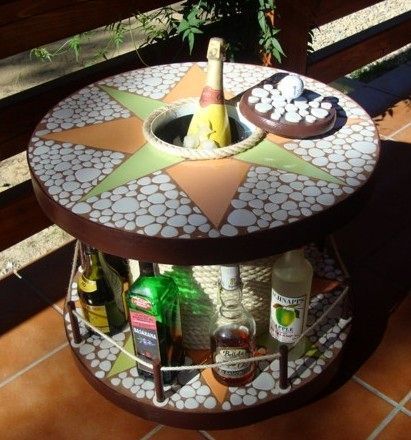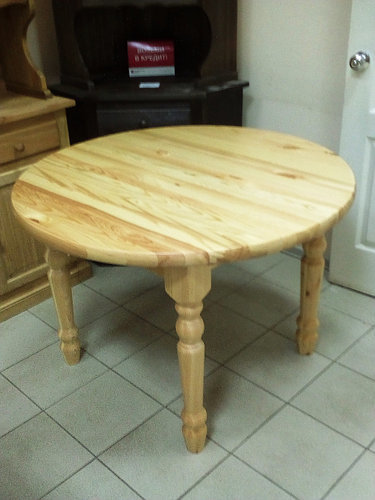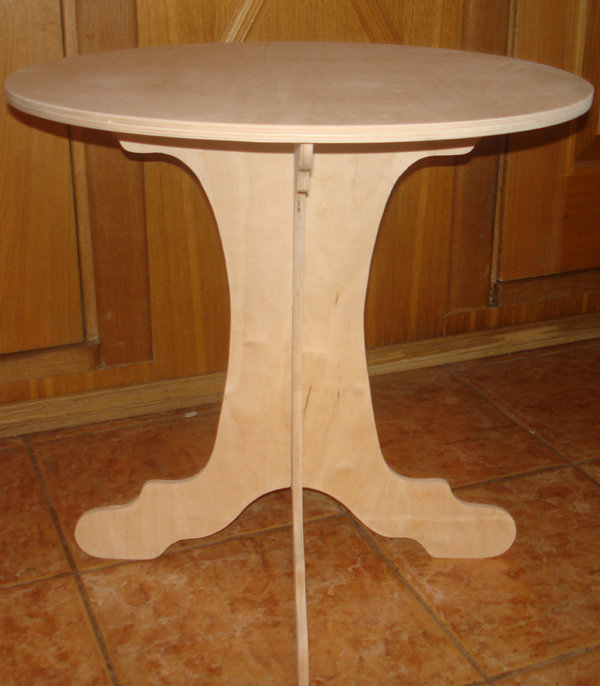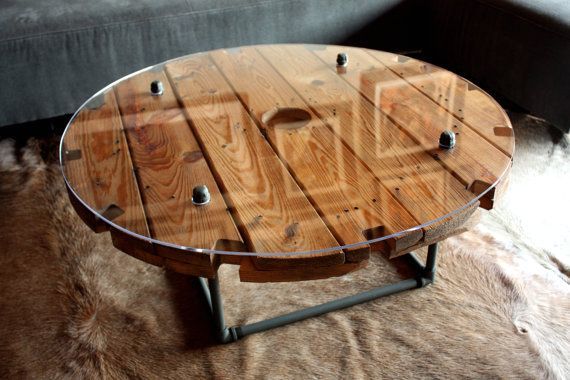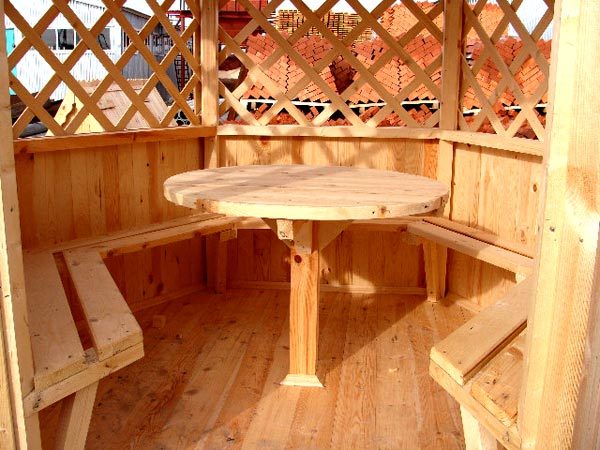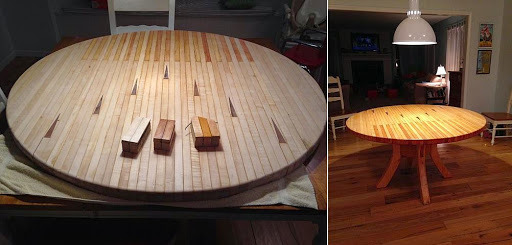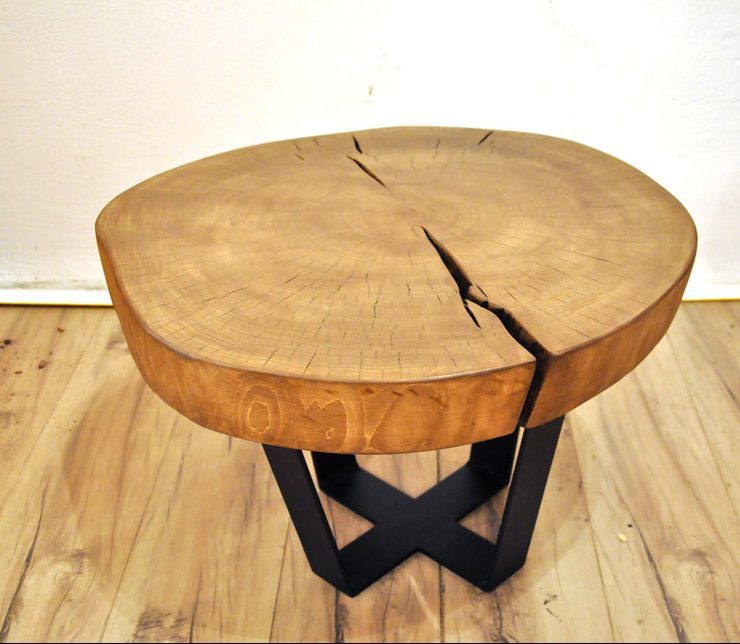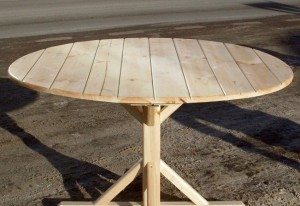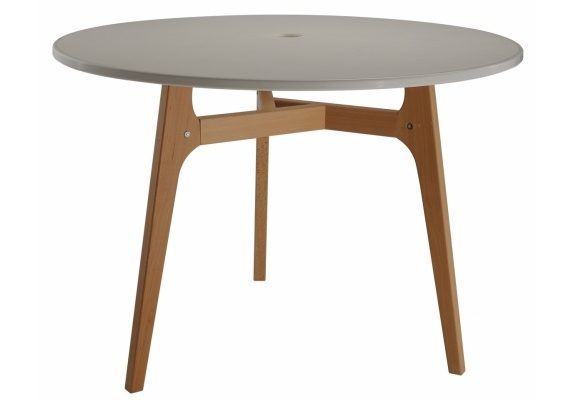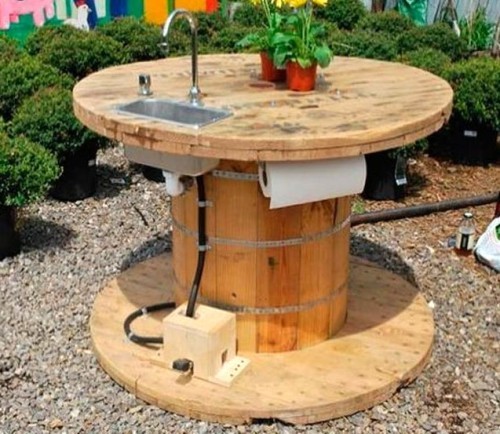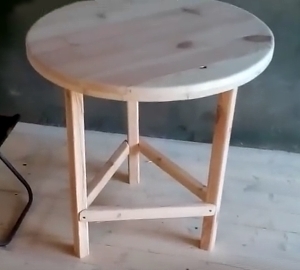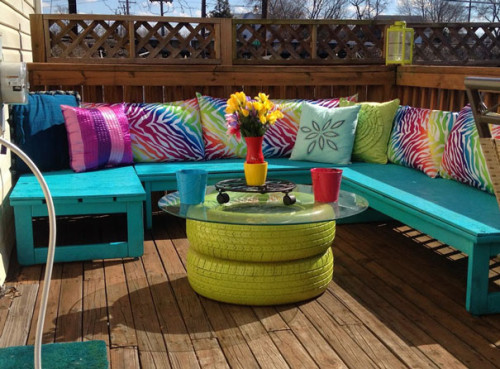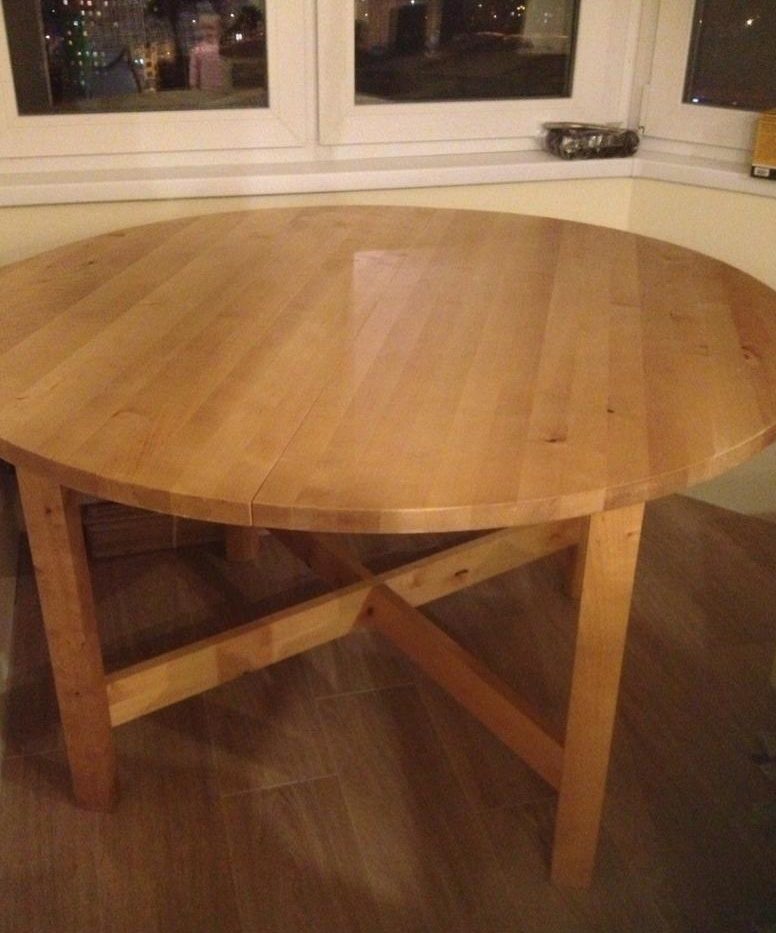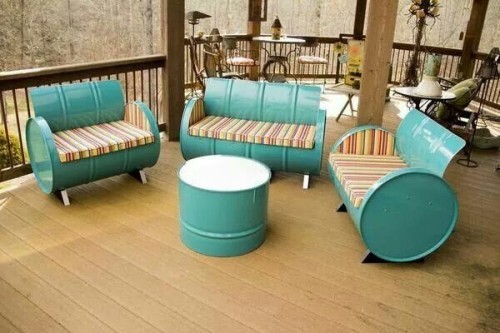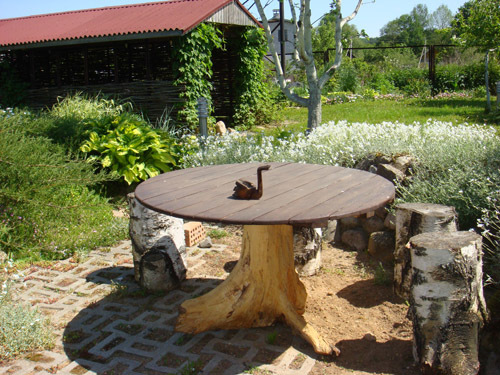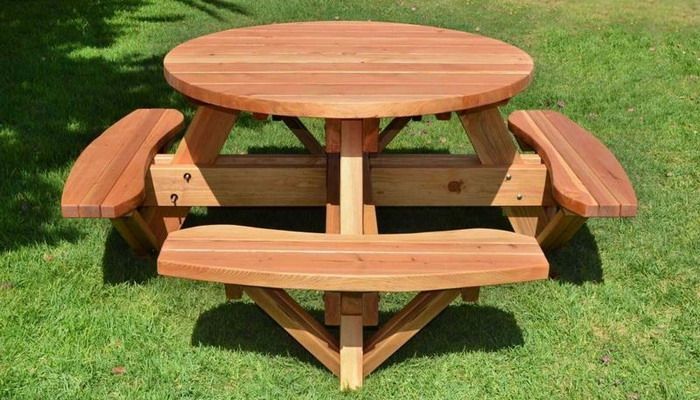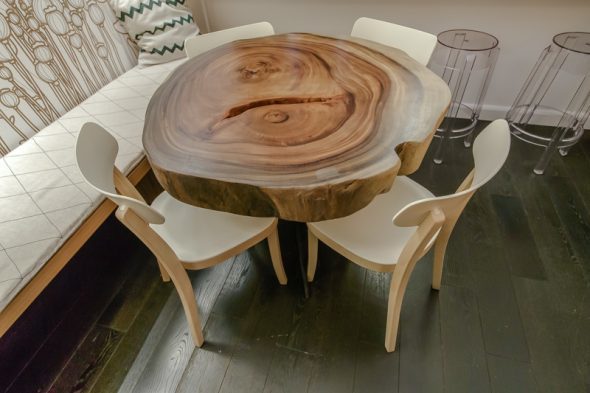Each home-owner wants to show off his property to the guests. It is especially nice to point out things made by yourself, like, say, a DIY Round Table. This adds special coziness to the house and special joy for the owner.
More and more often, flowerpots, flower beds, swings, ornaments made by themselves are found on personal plots. But the owners are not limited to this list. And move on to creating more complex products.
So, today we propose to make a round table with our own hands, surprising family and friends.
If you want to see more woodworking wizardry — check out our FREE 50 woodworking plans eBook 🙂
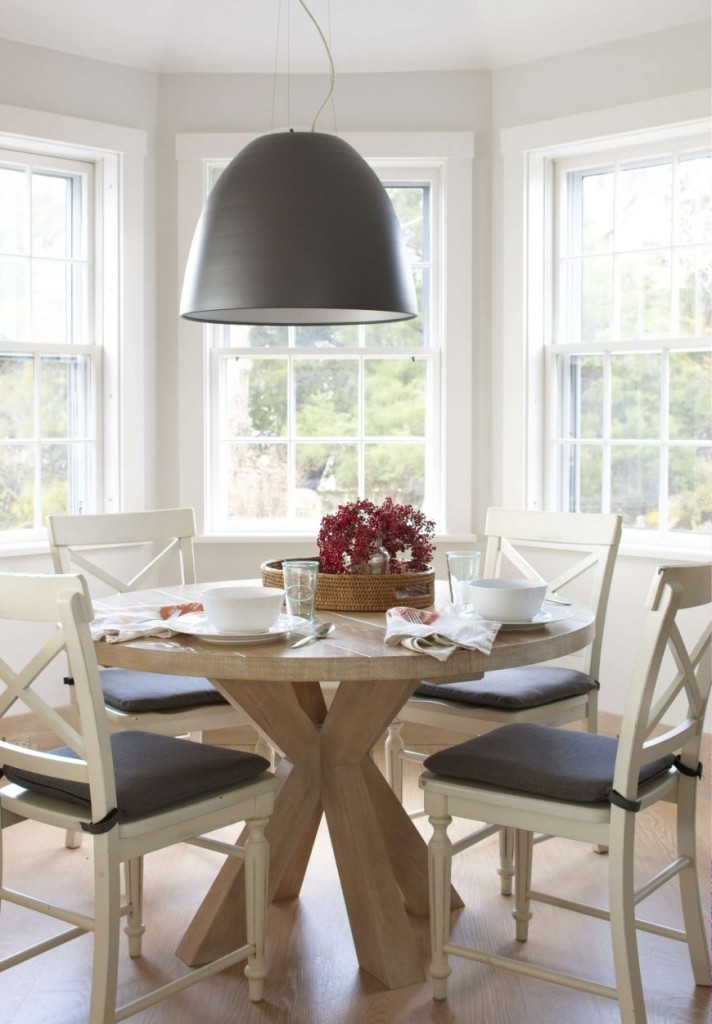
Advantages of DIY furniture making
Do you doubt whether it is worth taking up work? Then let’s talk about its benefits. I would like to note that this work is not difficult. We suggest making a simple model. Manufacturing does not take much time, effort, and does not require great carpentry skills. Now for the benefits. Making a table with your own hands, you get the following advantages.
- Save a significant amount of money. In-store items that are commonly offered by distributors are quite expensive. Sometimes the offered product is not worthy of the declared price. By choosing each particle with your own hands, you can make sure that it is worthy of the established price. And the entire product will cost significantly less.
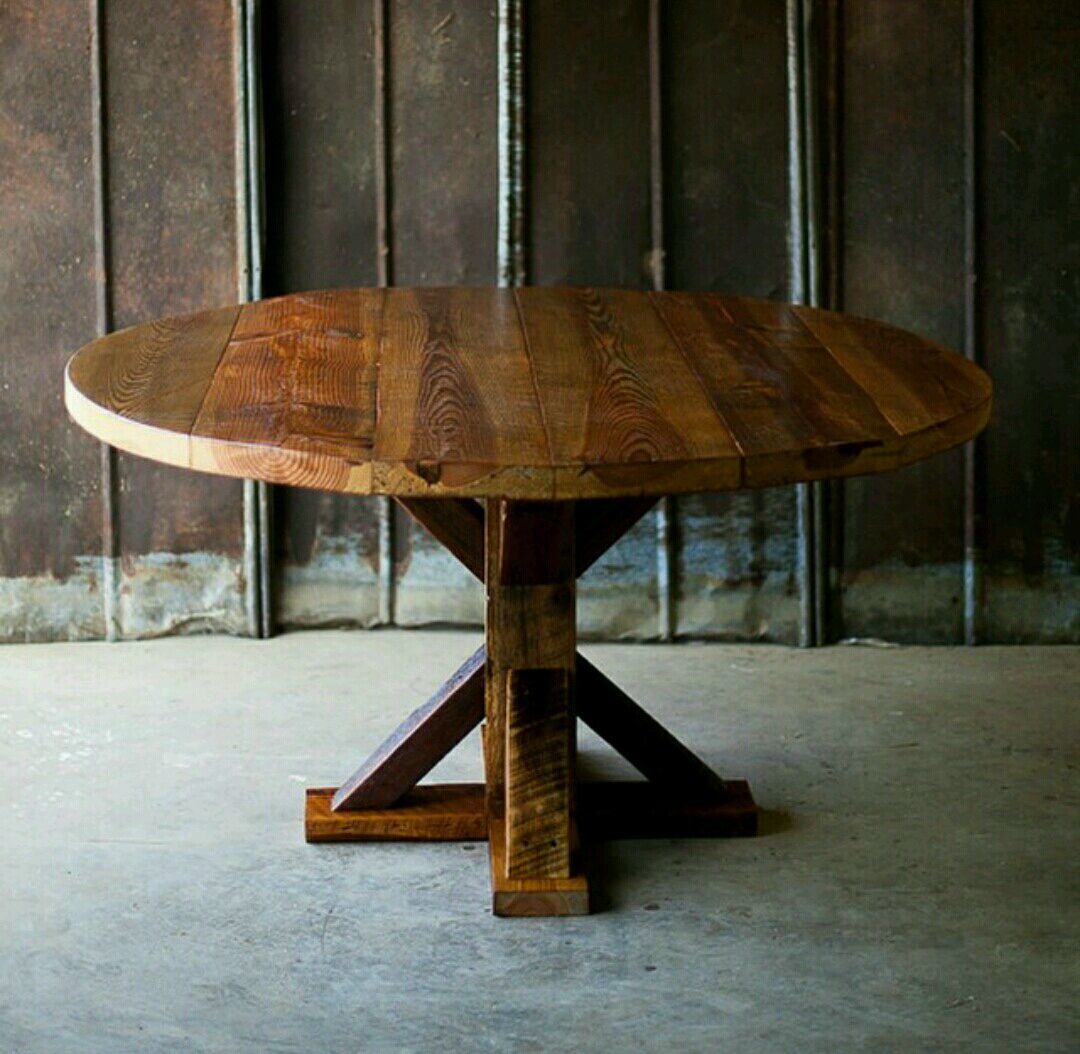
- You can choose any model. Stores will not always be able to offer a table that meets all your needs. Making furniture with your own hands, you can compile elements of different models, creating your own innovation.
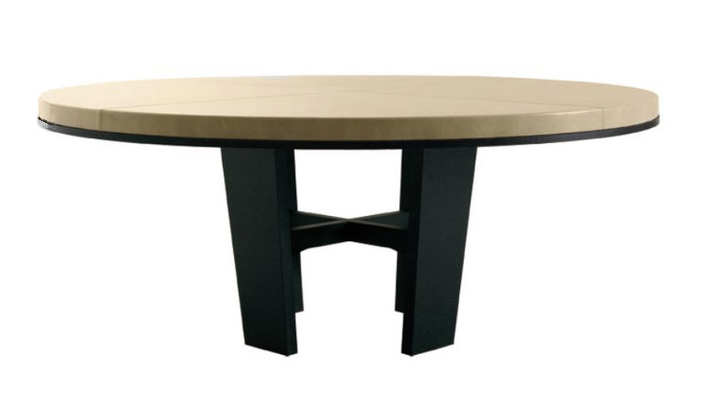
- You have the opportunity to choose a design. In this case, history repeats itself. You may not always find the desired product with the desired design in the store. Sometimes the appearance of the table may not fit into the overall interior. So, you can pick up any design by doing all the work yourself.
- Contribute to your own home. As a landlord, you will feel a bit of pride in upgrading your apartment or house without assistance.
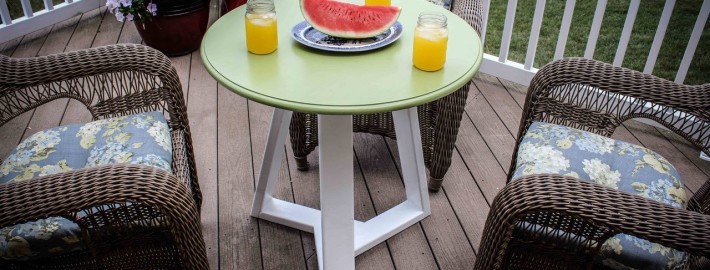
We think now you have no doubts that the furniture you have created will benefit, and now you are asking yourself another question, how to make a round table with your own hands.
Let’s start looking for the answer!
If you want to see more woodworking wizardry — check out our FREE 50 woodworking plans eBook 🙂
Determining the appearance of our DIY Table
Before proceeding to the detailed instructions, let’s decide what we want. The concept of “appearance” includes several items that have a number of options. Let’s consider them, and we can determine the type of future table. At the same time, we will decide what needs to be done and build an action plan.
| Criterion | Implementation options |
|---|---|
| Table-dislocation (purpose) | In-door Outdoor |
| Table structure type | Foldable Normal With one leg With two or more legs |
| Additional elements (“varnish”) | With or without storage boxes/drawers With a footboard Other optional items |
| Material | Natural wood Chipboard Metal Plastic |
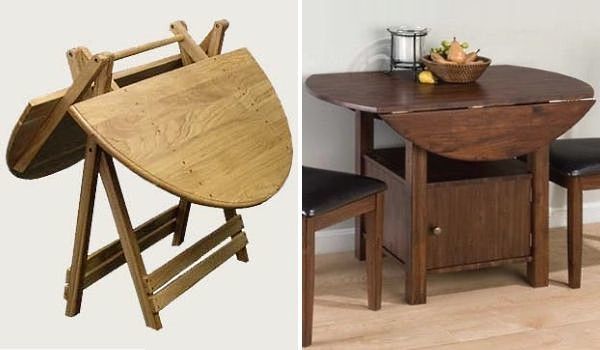
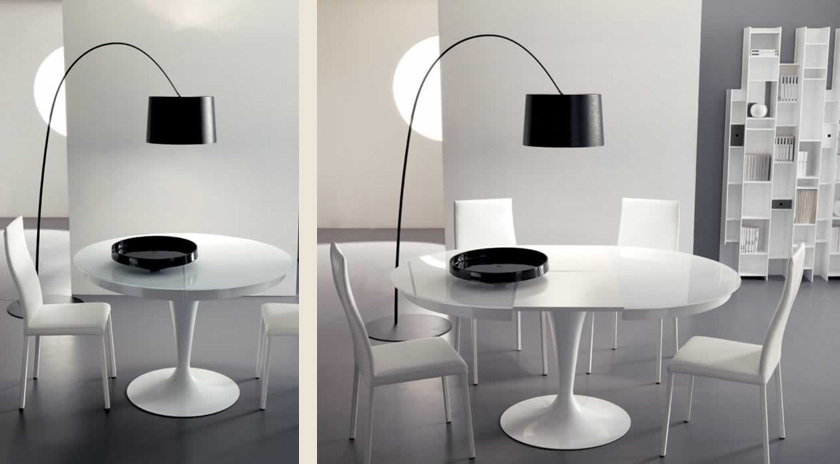
Now let’s take a closer look at how the above criteria affect our choice, decide on the appearance of our brainchild and get down to business.
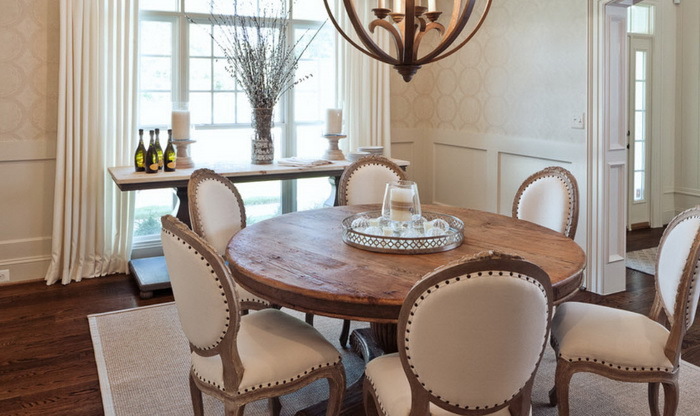
In our opinion, if you like the upper-mentioned design, you might also fancy something else along the lines of a DIY Farmhouse Dining Table or a rustic DIY Picture Frame. Also, a DIY Coffee Table made of un-aligned planks could add a nice touch-up!
DIY Table Purpose
This factor is also important, it influences further actions. If the table will be mostly on the street – then it needs to be treated with special means to prevent damage. He will stand in the house – the conditions are greatly simplified.
This factor also affects others: type of construction, the presence of additional elements, and design. A model will be built depending on the location and its further functions. When it is an outdoor option, additional boxes are needed. If the creation is for barbecues, it can be made without add-ons. In the case when the product is intended for a child, it must have appropriate parameters and additions.
So, the rest of the criteria depend on the functions assigned to the future creation. Therefore, determine in advance what is needed to fully perform the intended functions.
If you want to see more woodworking wizardry — check out our FREE 50 woodworking plans eBook 🙂
DIY Table Type
Let’s divide the types of tables into folding and ordinary. Depending on the choice, you will need different tools and the assembly process differs. Determine this criterion in advance.
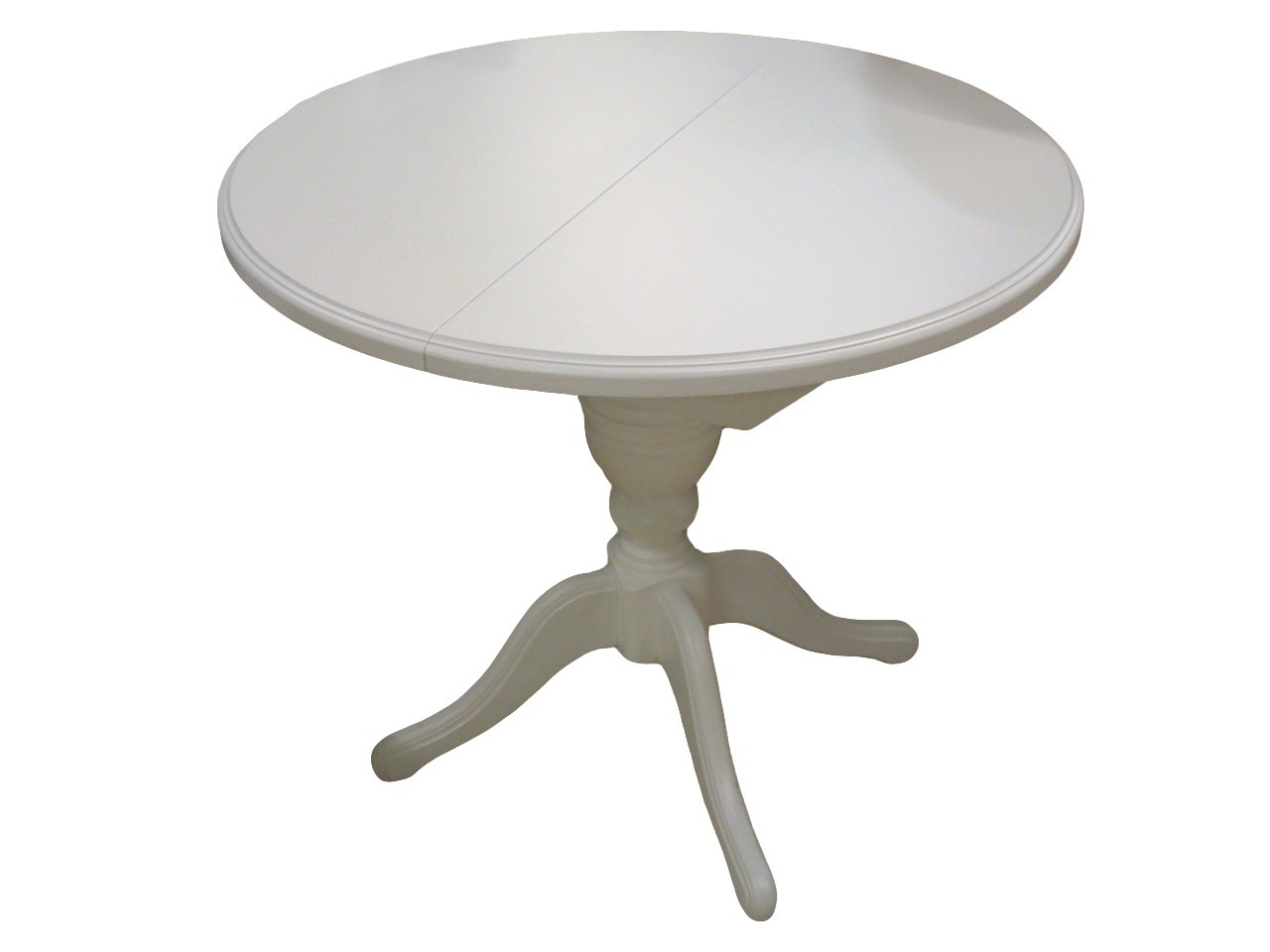
Next, we find out the number of legs. We can make a table with our own hands on one leg, two, three and four. All of these models are stable (if designed and built correctly) and have a great appearance. It all depends on your own preferences and product functions.

The type of construction also includes additional elements. Find out if you need a drawer inside or a footboard, it may be enough to make one shelf under the product’s lid. In this case, the purpose is the determining factor.
In general, think over everything in advance, and start creating a drawing. It is at this stage that you can make corrections or make mistakes and mistakes (then they must be corrected on paper!).
This stage is very important. If you cannot go through it yourself, find a ready-made drawing on the Internet, adjusting the dimensions, or entrust this matter to the master.
If you want to see more woodworking wizardry — check out our FREE 50 woodworking plans eBook 🙂
Choosing a material for our Table
The most common material for creating a table with your own hands is solid wood. That is natural wood. The basis can be pine, beech, oak, ash. Pine is the most commonly used. It lends itself well to processing and does not require special skills.
The next option is chipboard (particle board). They can be used, but not for the entire table, but only for some parts, such as a lid, drawers or a shelf. Legs should be solid wood for stability and durability.
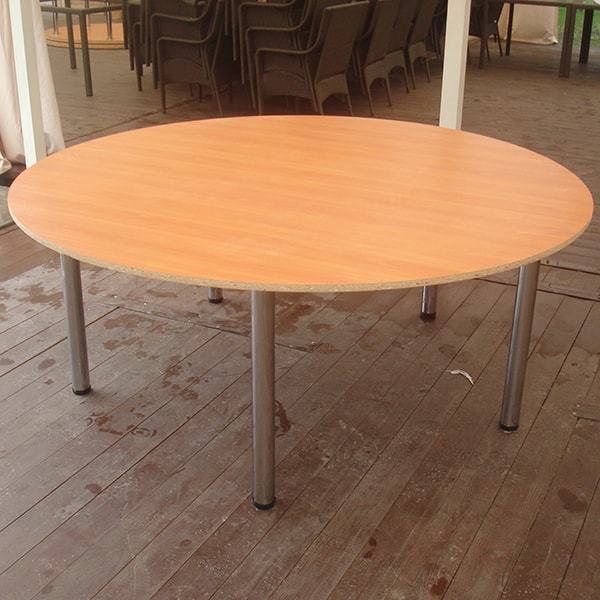
On the summer decks (verandas), you can see plastic tables and chairs. You can make them yourself, but for this, you need to purchase elements. And the creation of the table is reduced to the assembly of the resulting parts.
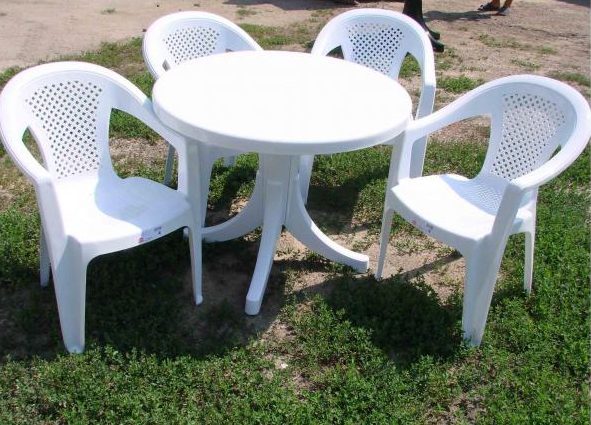
Metal is a common material among people with the skills of a welder and the appropriate tools. This base is strong, durable, and works well for outdoor products. But if you do not have the necessary skills, it is better to give preference to the tree. A round table made of wood with your own hands will suit any design and does not require special skills to create.
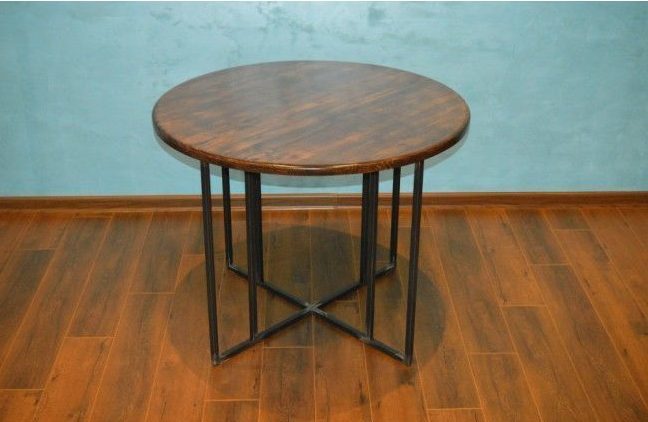
If you want to see more woodworking wizardry — check out our FREE 50 woodworking plans eBook 🙂
Choosing Decoration for our DIY Table
This is also an important part and should be thought out in advance. Some types of decor, such as burning, must be included in the action plan in advance since the product should be varnished only after the decor is displayed.
Choose a design depending on the purpose and location of the table. If this is a children’s work area, make it bright, and it is better to refuse white. If it is intended for an outdoor gazebo, leave the color of natural wood by covering the product with varnish.
In general, the choice is yours. But do not forget that the decor should not interfere with the performance of the main function and be in harmony with the environment.
Let’s start manufacturing our cozy Table!
We have decided on the main criteria and can proceed to the step-by-step analysis of creating a table. We will make a pine table, as this is the simplest and most common option. But before the assembly, there are still a few preparatory steps left to do.
If you want to see more woodworking wizardry — check out our FREE 50 woodworking plans eBook 🙂
Preparing materials and tools
Assembling the table will not be difficult if you carry out all the preparatory work correctly. First, you need to prepare the tools so as not to look for them in the process. The arsenal should contain:
If any tool is missing, be sure to purchase it or borrow it from a neighbor, because without proper preparation no good product can appear.
You will also need the following materials:
- pine boards/planks (for the cover)
- pine bars (for legs)
- screws (self-tapping/Parker screws)
- Wood glue
- Metal corners
- Wood varnish
- Wood processing agent
- Paint (if you want)
Now that all the preparations are complete, we can proceed to the main stage of work.
The DIY Table assembly process
For a simpler and faster explanation, we will describe the work step by step:
- Make a lid. To do this, glue the required number of pine boards with wood glue and secure them with clamps. After the glue dries, draw a circle on the resulting square. Cut a circle around the outline. This is the basis for our table.
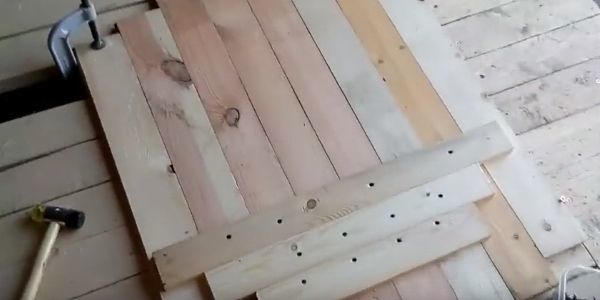
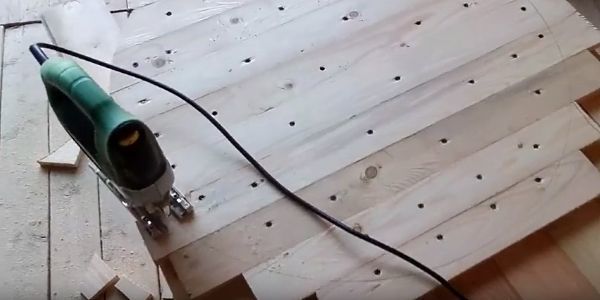
- Sand all edges of the lid and its surface with a grinder. Begin sanding the edges if necessary.
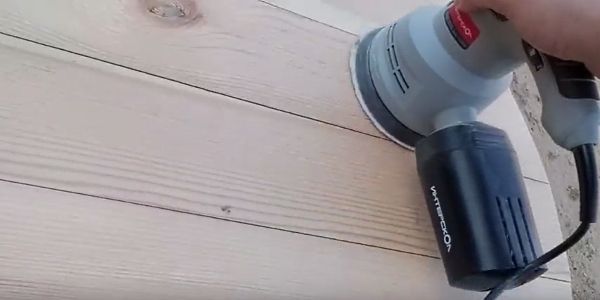
If you want to see more woodworking wizardry — check out our FREE 50 woodworking plans eBook 🙂
- Take 3 bars of the same length and fix them with corners and Parker-screws on the back of the lid at the same distance from each other.
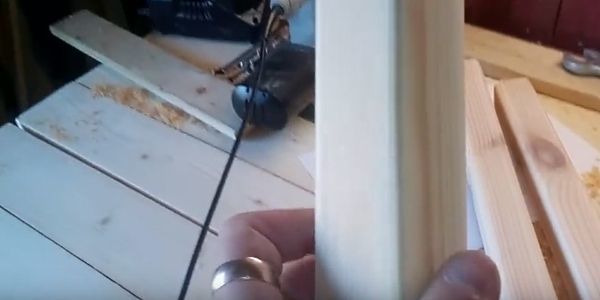
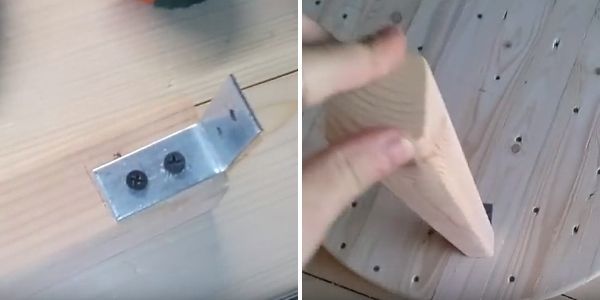
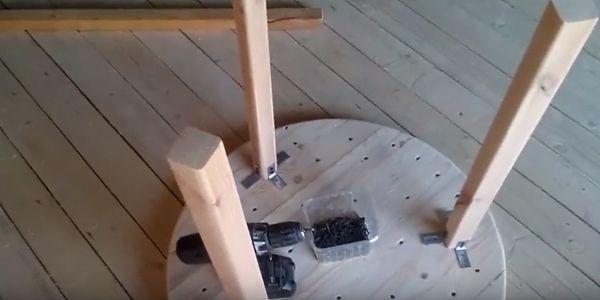
- Attach jumpers between the legs for the strength of the product

- Cover the surface with 1-2 layers of varnish
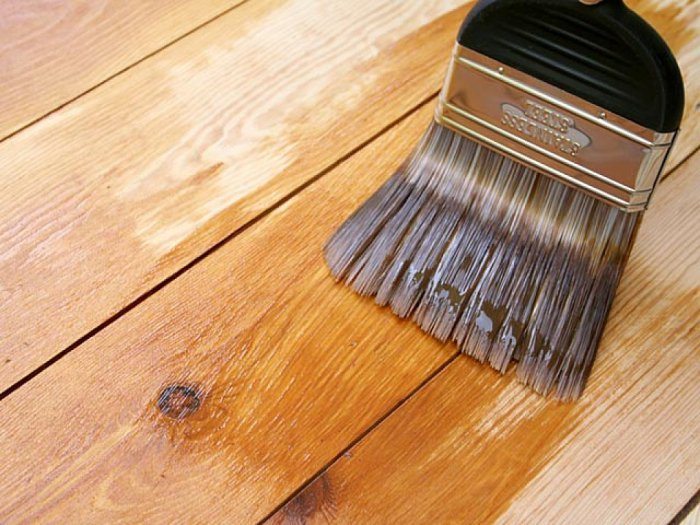
How to build a DIY Round Table (Summary)
-
Making a lid
Glue the required number of pine boards with wood glue and secure them with clamps. Cut a circle around the outline
-
Sand all edges of the lid and its surface with a grinder
Begin sanding the edges if necessary.
-
Make legs
Take 3 bars of the same length and fix them with corners and Parker-screws on the back of the lid at the same distance from each other
-
Attach jumpers between the legs
Make jumpers from bars of the same or smaller size and attach them to the legs with Parker-screws
-
Varnish
Cover the surface with 1-2 layers of varnish
-
Done!
You are all done! Congrats! 🙂
We hope that now you have no questions left on how to make a DIY round table. As you can see, it’s pretty simple. All that remains is to put the final touch by choosing any design. However, leaving the product unpainted will enhance its natural beauty.
This option will be better than the rest, and recently it has become more and more popular. Do not forget that the design must be written in the preliminary work plan. This will help you avoid surprises and make the process much easier.
If you want to see more woodworking wizardry — check out our FREE 50 woodworking plans eBook 🙂
P.S. Bonus Ideas for building DIY round tables and using them in the interior of the house and outdoors:
If you want to see more woodworking wizardry — check out our FREE 50 woodworking plans eBook 🙂

